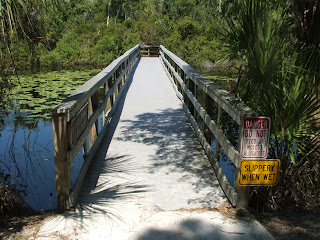Trails are important as we measure who we are as Americans
and as individuals.
“These times of challenge can seem daunting, but as a
nation, we have gone through crises before and each time we have emerged
stronger and better. These are times when we look both within ourselves and to
leaders to navigate troubled waters.
As people who care about the American
landscape and our relationship with it, it will be a time when we will be
called upon to share our talents and to lead. What we do as trail and greenway
advocates will not be superfluous or trivial in these times and here is why. Maintaining
the integrity of our values as a nation is a paramount element of weathering
tough times.
Our landscape and how we treat it has been, and must remain,
important. It is more than just aesthetics, because our relationship with our
natural resources is a key aspect of this crisis— as the fires out west
demonstrated. Our physical, mental and spiritual health is equally important.
Trails and greenways are important in this picture. So where DO we fit in? Through our work, we
need to convey a message. That message needs to be about a sense of stewardship
in our wild lands and open spaces.
Wildfires and mosquitoes carrying West Nile
virus might challenge these values when people feel less safe. We will need to
improve our skills, learn more, and help people learn to better live with a
troubled landscape that ultimately must sustain us. We need to explore ways that
greenways and trails improve the economic well-being of states and communities
and how trails and greenways promote better health and fitness.” -Bob Searns
------------------------------------------------
"We know that the United States spends more for health
care than any other nation on earth- an estimated $3,358 per person, that is 14
percent of our gross national product. We have also learned that in order to
keep costs down, future health care strategies must focus on prevention.
The
most important prescriptions for creating effective preventative care are
regular exercise and a moderate diet. According to the 1990 Healthy People 2000
report, there is increasing evidence that light to moderate physical activity,
often associated with recreation behavior, can have significant health
benefits. The report recommends several appropriate actions, including
significant investments in recreation resources, such as areas for hiking,
biking and swimming." -Texas Parks and Wildlife
-----------------------
“Look for a discussion of Nature in psychology texts and you
will usually find next to nothing. Animal research in psychology normally
consists of controlled laboratory procedures with rats, monkeys, pigeons, or
flatworms.
Sunsets, waterfalls, lunar eclipses, a bolt of lightning, rainbows,
a fresh snowfall, a tapestry of wildflowers in a mountain meadow, the sweet
lusty evening song of a warbling vireo, the haunting hoot of an owl, majestic
snow-capped mountains at sunset and towering redwood trees thrusting up into a
fog bank, seldom, if ever, get any column inches in our psychology texts.
These
are the books that set the standards of what we should think of ourselves. It
is as if Nature had no significant influence on our lives! "We are victims
of academic, scientific, and even therapeutic psychology, whose paradigms do
not sufficiently account for ". . . that essential mystery at the heart of
each human life," James Hillman has declared. I could not agree more.
Until Nature is factored into our psychology we cannot become whole, and our
ability to avoid environmental catastrophes is hindered. There have been
efforts to articulate the man-nature relationship, principally "deep
ecology" and "eco-psychology." Both have made valuable
contributions, and both also at times become political movements as much as
scholarly pursuits.
But more importantly, what do you feel when you are on the
trail? -James A. Swan, Ph.D
-------------------------------------
“To best increase the use of your trails, you must ensure
that the trail experience itself is a quality one.
Enhancing the trail
experience is needed to encourage repeat use and continued safe, appropriate
use. There are many tools and strategies that can lead to establishing the best
practice of enhancing the trail experience. Great Trails are well planned and
designed, well-constructed, and well maintained to ensure they are safe,
readily accessible and aesthetically satisfying.
Great Activities meet the needs
and expectations of trail users. Great Trail Users ensure the long-term
viability of the trail or the experience through commitment and
stewardship.
Great trails and great trail activities must be promoted to achieve
the desired goal of increased trail use. It is important, however, to make the
distinction between information promoting the trail and the detailed
information required to get people to and around the trail in safety.
Potential
users must be made aware of what trails and activities exist, and must be
provided with the necessary information to use the trail and/or participate in
the activity. Both marketing and information tools, however, can include
brochures, maps, signage, trail guides, web sites, e-navigate communications,
branding, advertising, media coverage and special incentives.
Develop and
commit to a public relations plan. Brand your trail or experience. Provide
clear and accurate trail information. Create a website providing easy access to
current information and virtual experiences. Establish mutually beneficial
marketing relationships. Finally, make friends with the media to have a “Force
Multiplier” for your promotions budget.” - Hike Ontario







